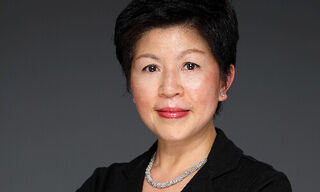Maryann Selfe: «Turning a Blind Spot Into an Investment Opportunity»
Less than two percent of global venture capital flows into women’s health – a structural blind spot that misprices risk, stifles innovation, and leaves billions in potential market value unrealized, argues Maryann Selfe in her exclusive contribution to finews.asia.
Women account for half the population, drive roughly 80 percent of healthcare decisions, and control an estimated $30 trillion in consumer spending power. Yet medical research, product development, and healthcare delivery continue to be designed around male biology and male-centric datasets.
This imbalance has structural consequences. Diseases with high female prevalence, like autoimmune conditions, hormonal disorders, endometriosis, and cardiovascular disease, remain underdiagnosed and underfunded.
Undervalued Market
Drug side effects for women are often discovered only after approval. Entire markets such as menopause care, fertility innovation, and maternal health remain dramatically underserved relative to need and demand.
According to «Grand View Research», the global women’s health market is projected to grow from $49 billion in 2024 to $68 billion by 2030. While definitive forecasts vary, many growth models suggest that women’s health could be a multi-hundred-billion to trillion-dollar sector in the coming decade.
Strong Commercial Potential
Historically, investors have treated women’s health as a specialty subset of healthcare. Today, that framing is shifting. Demographic trends are creating a powerful economic catalyst: by 2030, women over 40 may become among the wealthiest cohorts in modern history. The intersection of longevity science, hormonal research, and digital therapeutics is opening a pipeline of scalable innovation with strong commercial potential.
The macro logic is simple: healthier women translate into higher labour participation, lower healthcare costs, and greater household stability. Closing the women’s health gap strengthens productivity and supports long-term fiscal sustainability, both outcomes that align with both private and public capital goals.
Europe’s Opportunity
While the US currently leads in femtech investment, Europe has a strategic advantage in science, clinical research, and regulatory rigor. Switzerland, in particular, hosts world-class healthcare infrastructure, strong pharmaceutical expertise, and a growing innovation ecosystem.
Yet capital flows remain fragmented. Many promising startups struggle to secure early-stage funding or navigate regulatory and reimbursement pathways. The result: European science often migrates abroad, where markets are faster to recognize commercial potential.
Correcting this imbalance is not only a matter of equity but of competitiveness. Europe’s ability to translate medical innovation into economic growth depends on its willingness to back the full spectrum of health innovation, including the 50 percent of biology historically underrepresented in research.
Systemic Blind Spot
The women’s health gap is not just about medical inclusion. It is also about financial architecture. Historically, healthcare innovation has flowed toward conditions that attract reimbursable treatment pathways and measurable outcomes.
Women’s health spanning hormonal transitions, reproductive care, and chronic disease management has often been classified as lifestyle rather than clinical, limiting institutional interest.
Investors Are Beginning to Notice
That framing is outdated. Advances in biomarkers, data science, and AI are now making women’s health conditions quantifiable and targetable, opening the door to scalable therapeutics and precision diagnostics. In parallel, consumer awareness has shifted dramatically: post-pandemic, women are seeking proactive, data-driven healthcare solutions at record rates.
Investors are beginning to notice. Global FemTech funding crossed $1 billion last year. Firms are increasingly funding diagnostics, menopause, and digital women’s health solutions. Yet, FemTech still commands just 1-3 percent of overall healthtech capital, a telltale sign that the sector remains in its early innings with large untapped space relative to other healthtech verticals.
Call to Capital
The case for investing in women’s health rests on both conviction and logic. From a macroeconomic standpoint, underinvestment in women’s health creates inefficiency: lower workforce participation, higher chronic disease burdens, and rising public health costs.
From a portfolio perspective, it represents an untapped growth frontier aligned with secular trends: longevity, precision medicine, and demographic transition.
Investors are accustomed to identifying mispriced markets. The women’s health sector is one that hides in plain sight.
What Comes Next
Following its official launch on October 15, FemmeHealth Alliance will convene its first webinar, «The Business of Women’s Health», on October 23, bringing together investors, founders, and industry leaders to explore how closing the gender gap in healthcare innovation can unlock both societal and economic value.
Maryann Selfe is the founder and president of FemmeHealth Alliance, a Switzerland-based non-profit platform mobilizing capital into women’s health innovation.















